Grow Your Own Food: A Fun Way to a Healthier You
Learning Outcomes
Let's define what you can do after this lesson:
-
Water your plants; when they need it, grow your own food.
-
Knowing the basics of food gardening
-
Take advantage of this time to research fruits, vegetables & herbs that are easy to grow.
-
Plant, water, & care for plants.
-
We're not talking about eating your own food.
-
Link your growing food at home to the broader world of agriculture.
-
Discover several food growing environments prior to even getting into the aspect of having an expansiveness of garden.
-
Explore the importance of organic & sustainable practices in growing your own food.
-
It is grown for the goodness of the Earth & people.
Why Grow Your Own Food?
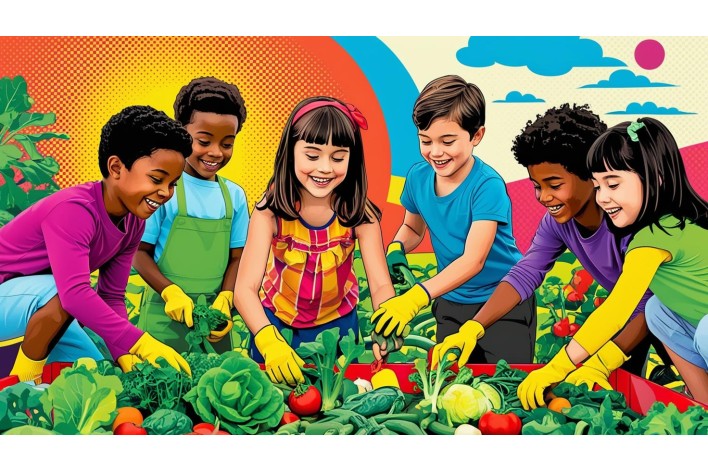
When you eat a fresh fruit & vegetables you ever thought which part of the world that comes from? Most of our food makes a long journey from farms to stores, but what if you could grow your own food at home? Growing your own food is a great idea for so many reasons!
First of all, when you grow your own food, you know what you’re eating. You decide what you put in the soil & how your plants are cared for. Compatible with various crops and safe from hazardous chemicals, for example pesticides! It is particularly crucial as it has direct implications for your health & welfare.
Second, it’s a fun and rewarding project to grow your own food! It’s a great way to be outdoors, exercise & learn about nature. You see the entire cycle from the planting of a very small seed to the harvesting of a tasty fruit or vegetable.
Third, growing your own food can help you save money! Once you establish one, you can lower your grocery costs by growing some of the foods you love to eat. Plus, you can share your harvest with friends and family & share in the joy of own food!
Also, growing your own food means you’re helping towards a more sustainable future. You’re lowering the carbon footprint that comes from transporting food long distances & supporting local, healthy food systems.
What is Gardening for Food?
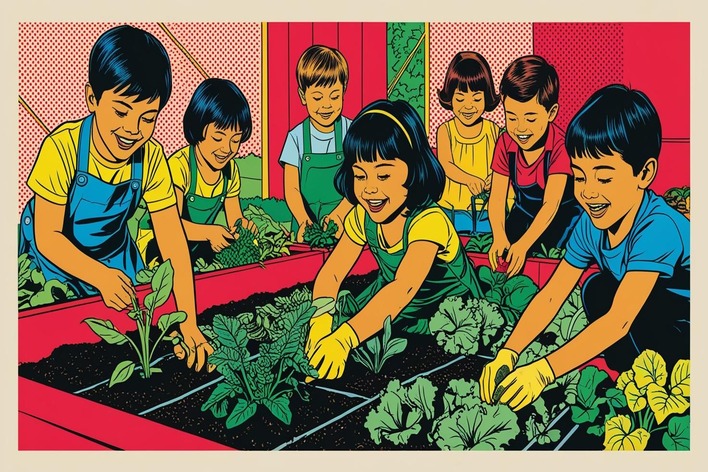
Food gardening is basically a catchall for growing your own fruits, vegetables, and herbs for eating. You can do it in a garden on a bigger scale, or potted (smaller scale), containers or even indoor! Or gardening for food puts you in touch with your food source & provides you with an immediate sense of accomplishment.
It doesn’t take a lot of land. Your balcony, a windowsill or a corner of your backyard can be a flourishing own food paradise! The trick is to select the right plants for your space and climate & to know the fundamentals of plant care.
Easy-to-Grow Foods for Beginners
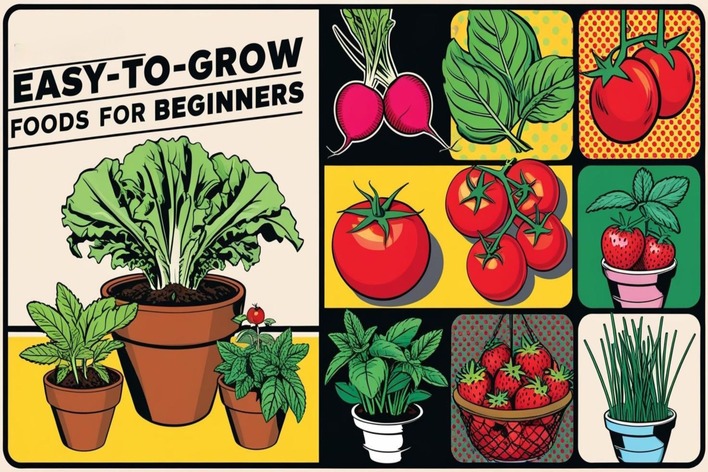
Getting started with your own food garden can seem overwhelming, but it doesn’t have to be! Some of the easiest fruits, vegetables & herbs to grow for anyone who wants to start marching toward becoming a gardener include:
Lettuce: Lettuce is among the easiest vegetables to grow. Just scatter the seeds in a pot or garden bed, keep the soil moist, & in a few weeks, you’ll have fresh lettuce leaves to harvest.
Radishes: Whip up a crop of quick, easy radishes. They grow in around a month & have a peppery flavor that kick-starts salads.
Spinach: Spinach is a healthy green, simple to grow It likes cool weather & you can harvest it several times.
Tomatoes: Tomatoes are a staple of the garden, and can grow in a pot or garden bed. Plant them in a sunny spot & stake them as they grow.
Herbs (Basil, Mint, Chives): Herbs are super easy to grow in pots & give all kinds of dishes flavor. Basil, mint & chives are especially easy to grow.
Strawberries: Strawberries in the garden are a deliciously (and visually!) rewarding fruit. You can grow them in pots or hanging baskets, & they’ll bear fruit for a few years.
Steps for Planting, Watering, and Caring for Plants
Planting
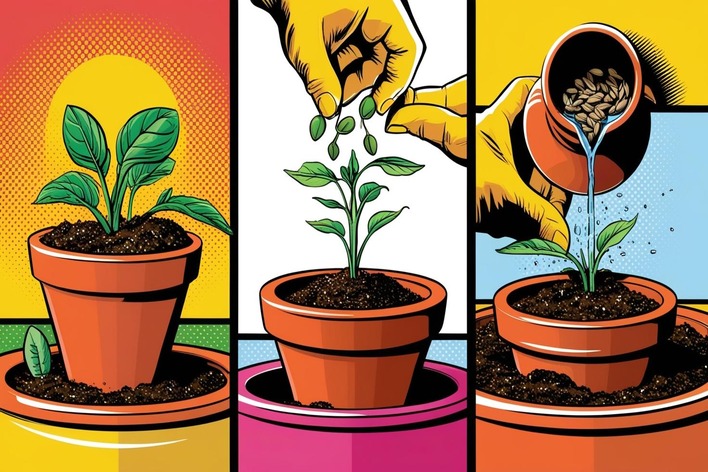
-
Choose Your Container/Location: Pick a spot with sun, compost and/or a potting mix.
-
Plant Your Seeds/Seedlings: Use the instructions on the seed packet or seedling label.
-
Cover and Water Gently: Lightly cover the seeds with a thin layer of soil & give a delicate watering to avoid displacing them.
Watering
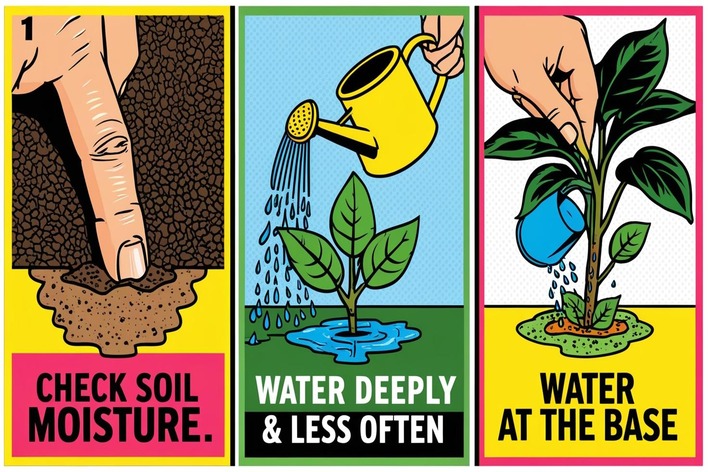
-
Check the Soil Moisture: Poke your finger into the soil. When hose soil feels dry, then is the time to water.
-
Water Deeply and Less Often: Instead of watering shallow & frequently, water deep and infrequently. This helps roots to grow deeper & makes plants more resistant.
-
Water at the Base of the Plant: Do not water the leaves, which can promote fungal diseases.
Caring for Plants
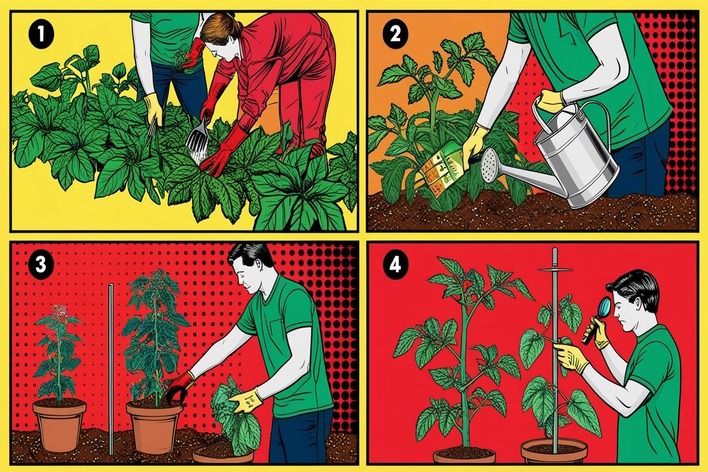
-
Weed Regularly: Pull out weeds that appear around your plants.
-
Fertilize Occasionally: You can feed your plants with organic fertilizer now & then.
-
Provide Support: Certain plants, such as tomatoes, require guidance as they develop. Stakes or cages can be used to help hold them up.
-
Monitor for Pests and Diseases: Watch for pests & diseases. If you see any issues, correct them immediately with organic techniques.
Benefits of Eating Your Own Food
Eat own food is more than just the taste, it is a combination of benefits for your health, your environment & your community!
-
Healthier and More Nutritious: While own food is much better than store food. You pick it at the height of its ripeness, so it has more vitamins & minerals.
-
Chemical-Free: Since you own the garden, you can choose to use chemicals & pesticides.
-
Increased Awareness of Healthy Choices: By growing your own food, you are more likely to make healthier food choices and consume additional fruits and vegetables.
-
Connecting to Nature: Gardening for food is a great way to connect with nature & to learn about your natural environment.
Connecting Own Food to Agriculture
While growing your own food may begin as a small backyard endeavor, it’s connected to the much larger world of agriculture, the science and practice of farming on a far grander scale.
-
Understanding Where Food Comes From: Developing an appreciation Whether form of agricultural work that the farmers do to provide food for us.
-
Supporting Local Agriculture: Helping local farmers by purchasing your food from them will help your community & can help your local fields stay alive.
-
Learning About Sustainable Practices: Agriculture has its effects. Emphasizing sustainable gastronomy gardening helps reinforce the need for it on farming scale for environmental & resource preservation.
Different Environments for Growing Food
Don't have a large backyard? No problem! Even in tiny spaces, there are lots of ways to grow your own food:
-
Container Gardening: Easy to Do for Those with Little Space
-
Balcony Gardens: If you have limited ground space, consider creating a vertical garden.
-
Indoor Gardens: Using grow lights, you can grow herbs, lettuce, and other small vegetables indoors.
-
Vertical Gardens: Use vertical space to grow plants since they are great for small balconies & patios.
Organic and Sustainable Practices
If you grow your own food, the organic and sustainable practices you can use to safeguard the environment & your health:
-
Organic Gardening: Organic Gardening Synthetic fertilizers and pesticides should be avoided. And instead you treat your plants and pests with compost, manure and other organic systems.
-
Composting: Composting is one of the best ways to recycle kitchen scrap & garden refuse into rich nutrient soil for your garden.
-
Water Conservation: Efficient irrigation techniques, including drip irrigation, conserve water.
-
Companion Planting: Companion planting is a gardening method in which different plants are grown in proximity to one another for mutual benefit. For instance, basil deters pests in tomatoes.
Helping the Environment and Community
So growing your own food is not only super healthy for you: it is also healthy for the environment and community!
-
Reducing Food Miles: Food miles refer to the distance food travels to your plate; by growing your food, it doesn't have to travel as far, lowering carbon emissions.
-
Conserving Resources: Sustainable gardening is also about conserving water, soil, and other resources.
-
Supporting Local Food Systems: Gardening & purchasing local food supports a more resilient, sustainable food system.
-
Building Community: Gardening can be done as a social activity. Share your bounty with neighbors and friends and get involved in community gardening projects.
Agriculture Activities for Kids
The idea of making agriculture fun & engaging for children as a means to ensure lifelong love of growing food:
-
Home Gardening: Something simple. Have kids set up a little garden at home where they can plant seeds in pots, water plants, and see them grow.
-
Farm Visits: Visit a farm & learn about food you grow on a larger scale.
-
Interactive Learning Tools: Help kids learn about agriculture with online games & apps.
-
Cooking Classes: Teach kids how to cook healthy meals using fresh fruits & vegetables.
-
Plant an Aeroponic Garden: Every little kid grows a plant in soil at some point, but most have never seen plants growing in air and water. Plant a classroom aeroponic garden & have the kids help maintain it. Discuss why the plants are/aren't growing well.
-
Dirt Table Sensory Bin: Fill your sand or water table with dirt from somewhere local. Give kids little gardening tools they can use to discover the plants & insects living in the dirt.
Fun Facts
|
Fact |
Details |
|
Plants Breathe |
Just like us, plants breathe! They take in carbon dioxide from the air & release oxygen. |
|
Seeds Need a Nap |
Some seeds need to be chilled before they will germinate. This is called stratification & mimics the natural winter conditions they would experience in the wild. |
|
Earthworms are Gardeners |
Earthworms are essential for healthy soil. They aerate the soil, break down organic matter, & improve drainage. |
|
Flowers Turn into Food |
Many of the fruits & vegetables we eat start as flowers! The flower is pollinated, and then the petals fall off, & the fruit or vegetable begins to develop. |
|
The biggest pumpkin |
The biggest pumpkin ever grown weighed over 2,000 pounds! |
|
Most of all vegetables have |
90% of the most familiar vegetables contain water. |
Conclusion
Growing your own food is more than just a hobby; it's a way to connect with nature, improve your health, & contribute to a more sustainable future. Whether you have a large garden or just a few pots on your windowsill, you can experience the joy of harvesting your own fresh, delicious produce.
CBSE Schools In Popular Cities
- CBSE Schools in Bangalore
- CBSE Schools in Mumbai
- CBSE Schools in Pune
- CBSE Schools in Hyderabad
- CBSE Schools in Chennai
- CBSE Schools in Gurgaon
- CBSE Schools in Kolkata
- CBSE Schools in Indore
- CBSE Schools in Sonipat
- CBSE Schools in Delhi
- CBSE Schools in Rohtak
- CBSE Schools in Bhopal
- CBSE Schools in Aurangabad
- CBSE Schools in Jabalpur
- CBSE Schools in Jaipur
- CBSE Schools in Jodhpur
- CBSE Schools in Nagpur
- CBSE Schools in Ahmednagar
- CBSE School In Tumkur













